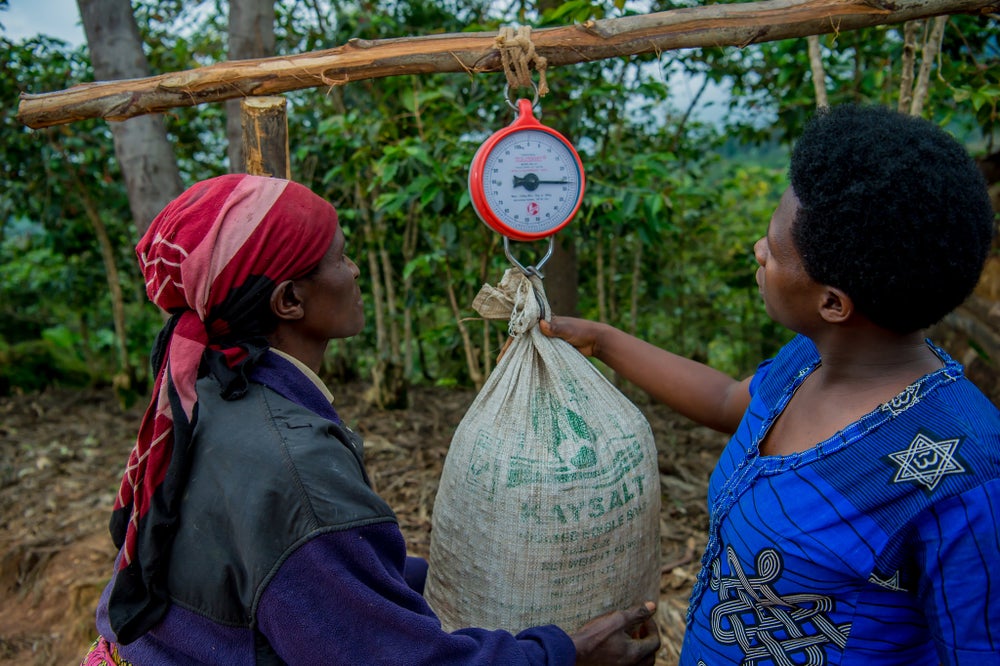
Resources for Roasters
Monday, August 14, 2023
The Power of Differentials
If you’ve read this far, you’ve probably heard of a differential or may even have a working knowledge of their function. You may even want to know more!

A differential is the difference in price between the dollar value for a certain origin or grade and the exchange (NY “C” in the case of Arabica coffee) price. For a simple example, if a Honduras High Grown is offered at $2.20/lb in a 200 market, the differential (or “diff”) is +20. Typically, green coffee contracts are negotiated with diffs “price to be fixed” against the exchange, but the mechanism remains the same. A +20 “price to be fixed” contract that is then fixed at 200 gives a final dollar value of $2.20/lb for that coffee, or, if the market is at 180 at time of fixation, a final dollar value of $2.00/lb, and so on. Diffs are powerful in that they confirm a contractual commitment for a specific origin and grade without requiring an outright speculation on the NY C exchange level at the time of contract.
Differentials and the Exchange
Most of the time, the exchange, or NY “C”, is just used as a benchmark for pricing coffees via differentials. So, what does physical coffee have to do with the exchange? Or, to put it differently, why is the NY “C” a valid hedging tool for green Arabica coffee? It’s because a certain standardized quality profile from approved origins can be delivered to or received from the exchange to settle open futures positions. Less than 1% of futures contracts are actually settled in this way, but that’s the physical connection nonetheless. These exchange deliverable coffees are basic Washed Arabica, fresh and green in color, 23 physical defects (or less) per 350g, no cup defects. The plain hamburger of green coffee, if you will.
When differentials for this plain hamburger are low enough so that you can deliver them to the exchange at market “level” (+0 differential), the marketplace for that grade is, in theory, in supply and demand balance. When there is oversupply – meaning more sellers than buyers - differentials will edge below “level” equivalent. At this point, traders will buy at negative differentials and deliver to the exchange, making the difference as margin. So, the exchange in a way is a buyer of last resort, able to buy all that can be sold of these baseline grades. As the exchange starts to fill up with this over-availability of coffee, the NY “C” price typically drops.
In this low-price environment, demand usually increases while producers, under cost-of-product pressure, begin to produce less. In subsequent crops, the global supply and demand balance shifts from oversupply to neutral to undersupply where there are more buyers than sellers. When this happens, producer differentials go positive, and buyers begin to use more of the ample exchange stocks considering that they deliver at “level” compared to positive diffs on offer from producers. Exchange stocks then start to drop, the futures price moves up, and the cycle comes full circle: high prices hurt demand, inspire more supply, and eventually offer diffs are cheap enough to deliver economically to the exchange.
Differentials for the Green Coffee Buyer
While the above describes the admittedly oversimplified “physics” of differentials and the exchange, it’s admittedly detached from 99% of what actually transacts between producers and roasters. So, what’s the connection to non-exchange coffees (or coffees that very rarely get cheap enough differentially to be delivered to the exchange), like Colombia Excelso, for example?
Differentials of non-exchange coffee types are basically value variations to standard exchange grades. If a Honduran High Grown exchange prep is worth “level,” a Colombian Excelso, which has a cleaner preparation with less defects, a more dynamic flavor profile, and more subjective value (thank you, Juan Valdez!) will be worth a premium to that Honduran. It’s like hamburger and USDA Prime steak. A Brazil Grinder, on the other hand, is easier to prepare, has more defects, has a less dynamic flavor profile, so it trades at a discount to exchange types (and that discount can be steep considering that these lower qualities cannot be delivered to the exchange, so there’s no buyer-of-last-resort). It’s like hamburger versus leftover scraps.
As such, when buyers consider differentials, they’re not considering singular differential values vs NY “C” alone but instead are looking at them as comparative value against other origin and grade combinations. Is a Honduras High Grown at +20 a good price? It depends on where the market is trading and where Colombian Excelsos are offered as well. And, of course, this comparative mechanism (diffs compared to the market and diffs compared to other diffs) isn’t functional in the decommodified Specialty space. What’s described here is comparative value within the “global blend.” It’s a big-picture representation of what roasters buy from producers and prepare for consumers around the world.
Conclusion
Differentials have an important function and, in theory, a well-defined connection to Arabica’s hedging mechanism, the NY “C”, even if it’s not a connection that coffee professionals frequently encounter. And reality is much messier with factors like weather, crop cycles, macroeconomic investment flows, freight variance, port premiums and discounts, and crop quality (to name a few) all affecting the coffee price cycle and differential setting.
For further learning, keep an eye out for an upcoming article from Ilya Byzov, Head of Research and Quantitative Trading, that’s analyzing the relationship between the NY “C” market and some of the most commonly traded differentials.
Interested in knowing more about differentials? Get in touch with your trader today.
Jordan Hooper began his coffee career at the end a two-year volunteer stint in Nicaragua. He’s always worked in the trade, starting in the cupping lab of a specialty importer prior to experience trading and managing both commercial and specialty trading businesses. He’s currently the managing director of Sucafina Americas, overseeing imports into North America and sourcing from Spanish-speaking Americas.

